Well, it would seem, where else? We have released three reviews of TECNO CAMON series smartphones: CAMON 30 5G, CAMON 30 Pro 5G, CAMON 30 Premier 5G. And even then they were talking about, perhaps, too many models within one series, partially overlapping each other (let’s also remember the regular CAMON 30, without a 5G modem). But we didn’t know that TECNO is also planning to release CAMON 30s Pro. So to speak, a younger version of what has already been released, but many questions arise regarding its positioning.

This is a smartphone that at the start costs a little more than the CAMON 30 5G (and even more so than the CAMON 30), lacks a 5G modem and has a simpler MediaTek Helio G100 hardware platform (yes, the G99 is not going away, offering all new and its new guises), but at the same time has a more striking design using a curved display and offers, for the first time in the history of the series, a wireless charging option. Even the TECNO CAMON 30 Premier 5G, which costs more than twice as much, did not have it. Yes, it’s easy to get confused in the “kamons,” but this clearly has its own twist.
⇡#Specifications
⇡#Design
All smartphones in the TECNO CAMON series have a common design with a multi-camera unit, designed like an analog lens – with a focus ring and various optical characteristics (here we are just listing the camera characteristics). CAMON 30s Pro is no exception, but it is perhaps the most beautiful member of the family – despite being one of the most inexpensive.
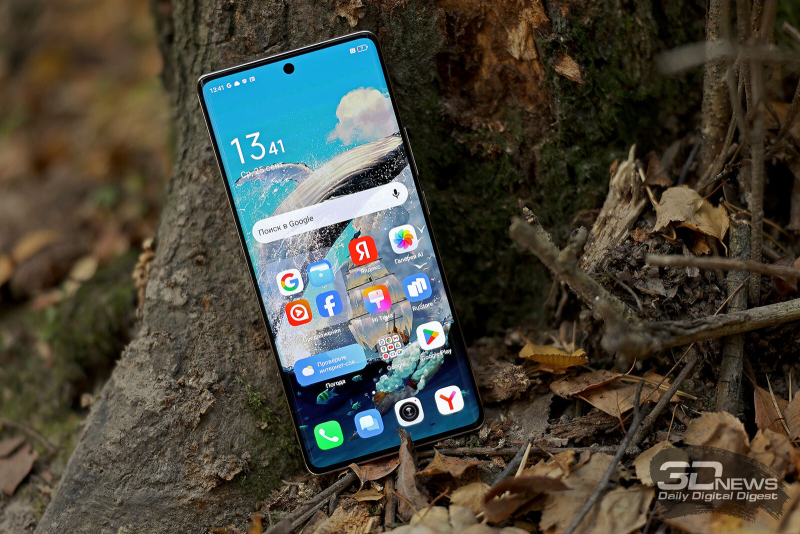
It’s all about the successful combination of plastic, designed to look like metal, and artificial leather – in our case, a delicate cream shade. The picture is complemented by the absence of a conventional “grip for gripping”, as on camera cameras. The smartphone seems to be better without it – yes, the red indicator characteristic of the series ultimately does not refer to the video recording key, as on professional equipment, but it looks good even without these references.
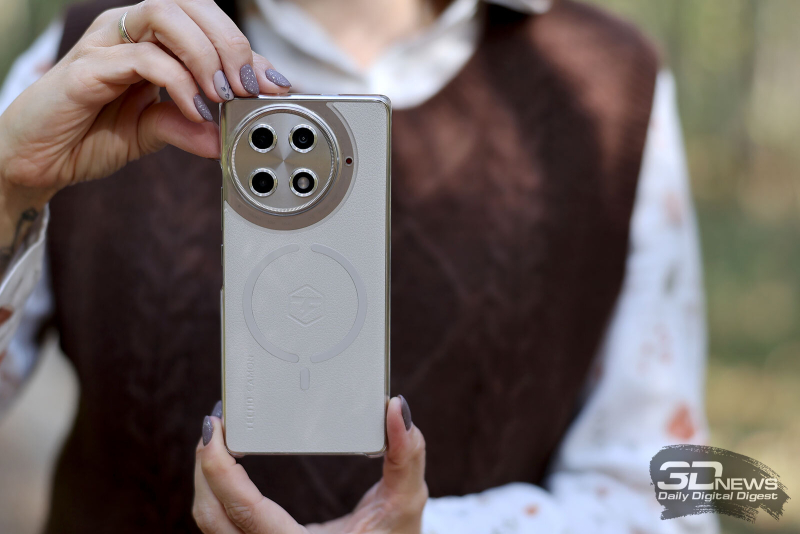
TECNO CAMON 30s Pro in a complete case
It should also be said about the complete case, thin, painted in the color of the case and not only does not spoil or hide the appearance of the smartphone, but, on the contrary, complements it. In addition, it is made of transparent plastic combined with the same artificial leather as the back of the gadget itself. Plus, there is a magnetic panel on the case for attaching a wireless charger.
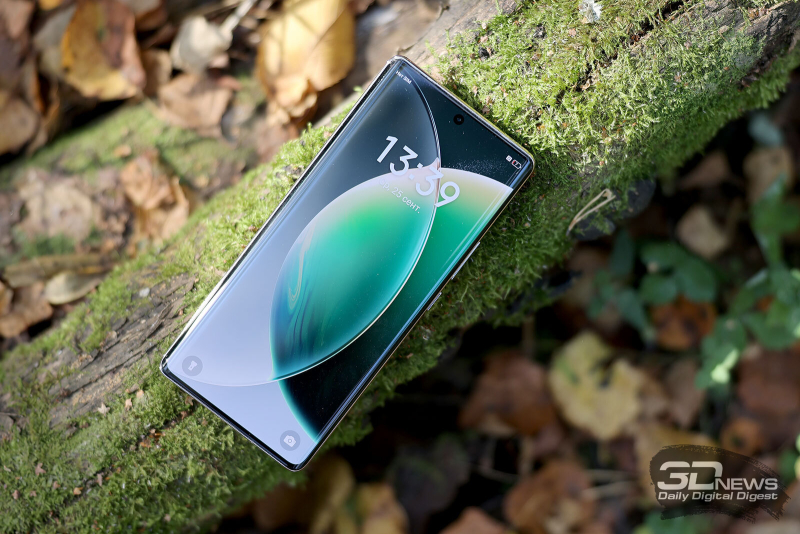
TECNO CAMON 30s Pro, front panel: at the top of the display – front camera, earpiece above the edge of the display
In addition, TECNO CAMON 30s Pro is thin and light: 7.7 mm and 180 grams. At least thinner and lighter than most competitors, except for HUAWEI nova 12s and HONOR X8b, a couple of fluffs leading in the unofficial competition. But CAMON 30s Pro has a curved display and a curved back, so it is very comfortable to hold in your hand – and it does not slip out of it thanks to the non-slip back panel or the same grippy case (which does not add much millimeters and grams to the device).
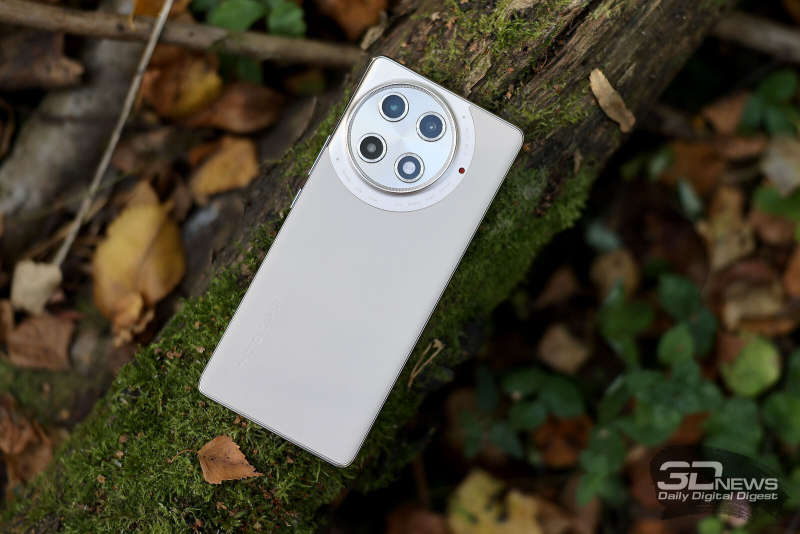
TECNO CAMON 30s Pro, rear panel: in the corner there is a large block with two cameras, a flash and a cover; to the right – LED indicator
The tactile impression is slightly spoiled by the plastic from which the edges and the camera block are made – it looks good (from a distance it can be mistaken for metal), but is simple to the touch. At the same time, the front panel is covered with tempered glass, and the brand name is Gorilla Glass 5. The case is protected from splashes and dust according to the IP54 standard.
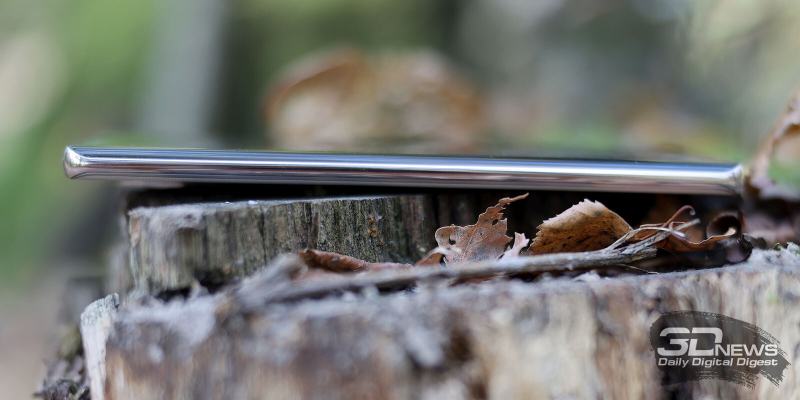
TECNO CAMON 30s Pro, left side without functional elements
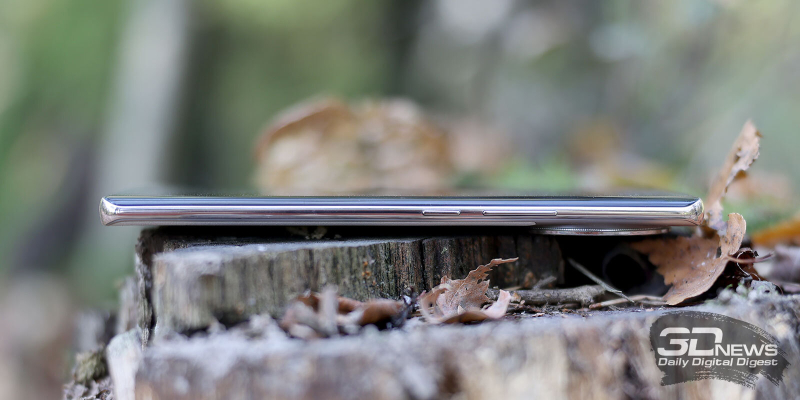
TECNO CAMON 30s Pro, right side: volume key/camera shutter key and power key
The frames around the screen are small, thanks to which it occupies 90% of the front surface – a good indicator. The front camera is housed in a custom punch-hole centered at the top of the screen.
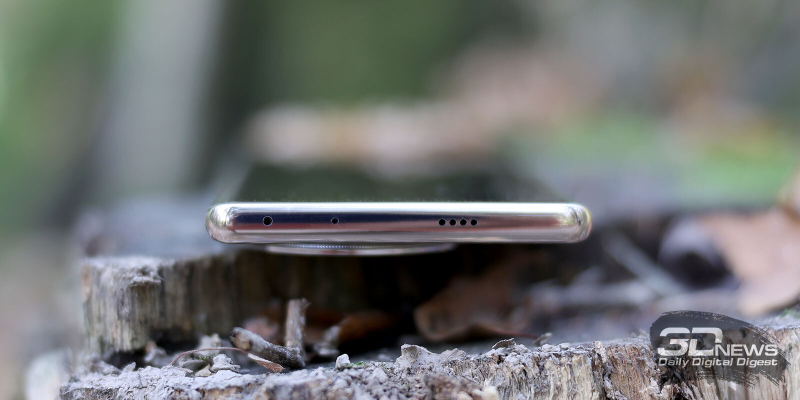
TECNO CAMON 30s Pro, top edge: microphone, speaker grille on the top edge, IR port
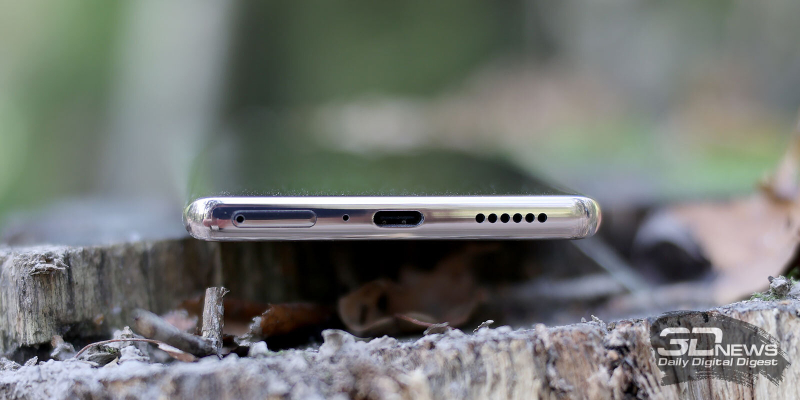
TECNO CAMON 30s Pro, bottom edge: microphone, USB Type-C port, speaker, slot for camera cards
There are three color variations: the back is made of artificial leather only in the “pearl gold” color option. “Starry Gray” features a plastic surface with concentric circles that reference long-exposure photographs of the starry sky. “Green Chameleon” is covered with plastic with Sunlight Drawing technology, thanks to which the smartphone can change color when exposed to ultraviolet rays. The main color is mint, but in the sun it changes to emerald green.
The functional elements are not entirely standard. That is, yes, a pair of hardware keys on the right side, the absence of a mini-jack, and a USB Type-C port are not surprising. But we note the same indicator that reacts to incoming calls, battery charging and connection with third-party devices using the infrared port. Yes, just an infrared port is something else that is not quite common for modern smartphones, although now this module is gaining popularity again.
⇡#Software
TECNO CAMON 30s Pro runs on the Android 14 operating system with HiOS 14 shell. Yes, this is still the same shell as on the previous CAMONs that we talked about, and on TECNO POVA 6, TECNO POVA 6 Pro and so on. So it’s short.
There is a specific, but quite adequate design, basic navigation schemes, a lot of pre-installed software – but it can be removed if desired, it is not “built into” the gadget. Other characteristic features: deep interface customization, an island in the front camera area, “floating windows” (picture in picture), a sidebar for quick access to favorite applications, a single SmartHub clipboard and a special mode for interacting with laptops of the same brand. The shell works quickly and stably. But it takes up 17.5 GB of smartphone memory – quite a lot. They promise up to three years of OS updates – that is, up to Android 16.
The fingerprint scanner is built into the screen sandwich, which is not entirely typical for a smartphone priced below 30 thousand rubles. An optical sensor is used – moderately sensitive, working with a small percentage of defects, but it is located, as usual, very close to the bottom edge of the smartphone. Vibration is triggered only if fingerprint recognition is unsuccessful. There is an additional face identification system using the front camera – it is less reliable, but it works much faster.
⇡#Display and sound
TECNO CAMON 30s Pro has essentially the same screen as TECNO CAMON 30 5G, but with curved edges. This is an AMOLED panel with a diagonal of 6.78 inches and a resolution of 2436 × 1080 pixels. Pixel density – 393 ppi.
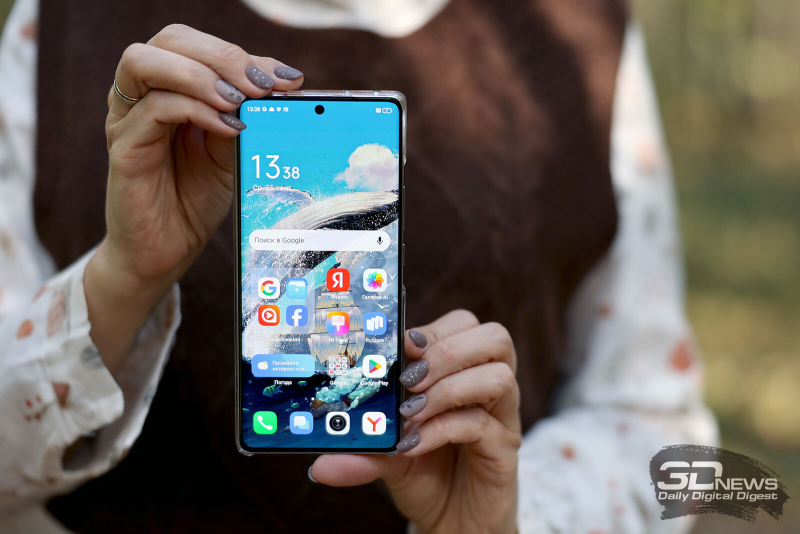
Refresh rates up to 120 Hz are supported (including in games, which is even surprising for a mid-class smartphone). You can either manually switch between frequencies of 60, 90 and 120 Hz, or leave the choice to your smartphone. The PWM frequency is 2160 Hz, flickering at low brightness levels will be essentially invisible. The sensor layer polling frequency is up to 360 Hz. Not bad characteristics even for a gaming gadget, of which TECNO CAMON 30s Pro formally does not belong.
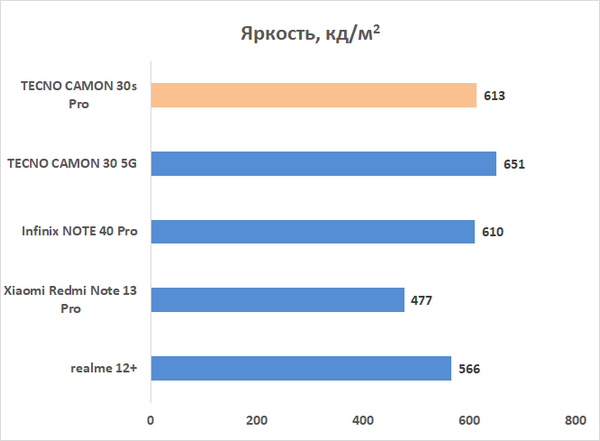
The maximum brightness of the TECNO CAMON 30s Pro display, measured under artificial lighting with LED lamps, was 613 cd/m2. An excellent indicator without any discounts or additions. At the same time, in the sun, the peak brightness increases greatly – a peak of 1300 cd/m2 is stated, I cannot confirm or refute this figure, but you can use the smartphone without the slightest discomfort.


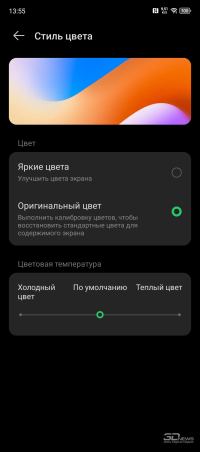
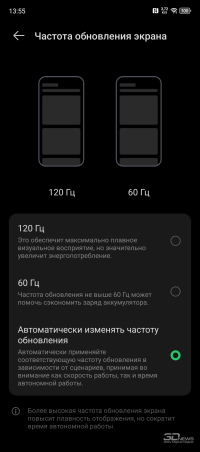
Display settings: brightness (including adaptive brightness); “vision protection” mode with warm colors, which is appropriate to turn on before bed; dark theme with the ability to customize its operating schedule; font size; adjusting the screen refresh rate. It is possible to customize color rendering (the parameter is called “Color Style” – there are no longer any global problems with the Russification of the interface, but some rough edges remain): the choice must be made between the “Bright colors” and “Original color” presets (yes, that’s right: plural and singular – while working on the display settings section, the translators got completely tired); For each of them, the color temperature can be individually adjusted. I measured the display’s color performance with the two available presets at the default color temperature.
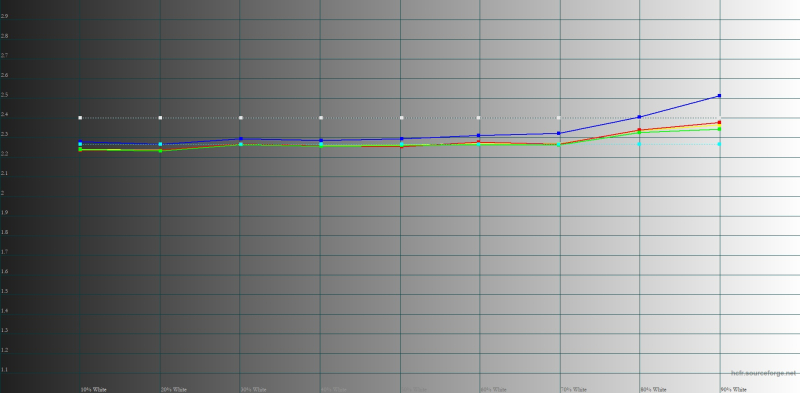
TECNO CAMON 30s Pro, gamma in “Original Color” mode. Yellow line – TECNO CAMON 30s Pro performance, dotted line – reference range
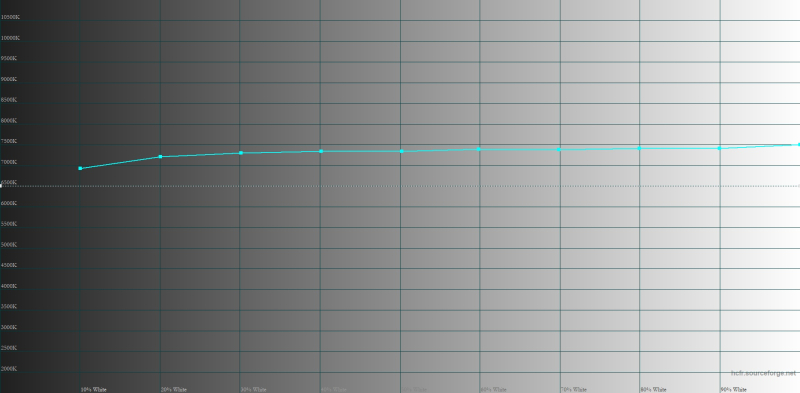
TECNO CAMON 30s Pro, color temperature in Original Color mode. Blue line – TECNO CAMON 30s Pro performance, dotted line – reference temperature
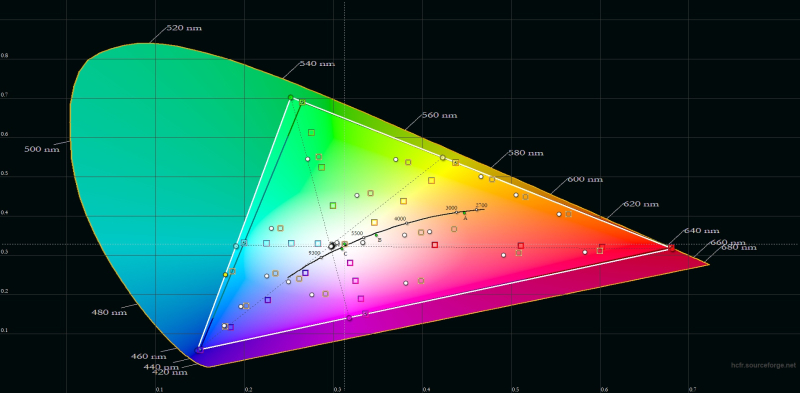
TECNO CAMON 30s Pro, color gamut in “Original Color” mode. Gray triangle – DCI-P3 coverage, white triangle – TECNO CAMON 30s Pro coverage
In the “Original Color” mode, which is set by default, the color space approximately corresponds to the DCI-P3 standard with a deviation along one of the axes, the gamma is essentially normal (the average level is 2.27), the color temperature is cooler than normal, but not too much – the median is 7,400 K. The average DeltaE deviation on the Color Checker scale, which includes both a wide range of colors and shades of gray, is 3.38, with a norm of 3. Not bad.
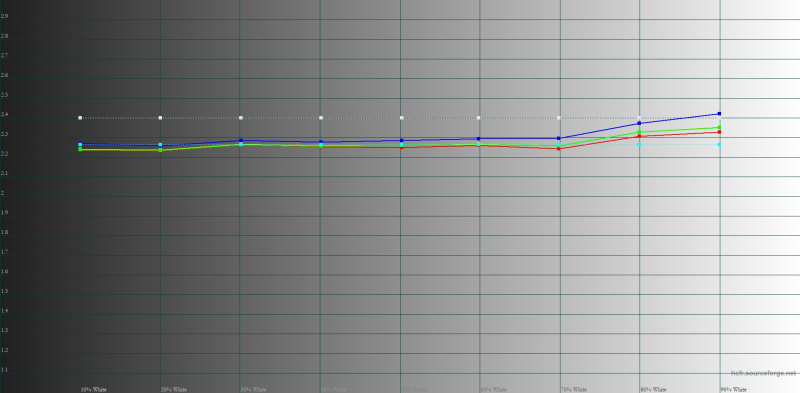
TECNO CAMON 30s Pro, gamma in “Vivid Colors” mode. Yellow line – TECNO CAMON 30s Pro performance, dotted line – reference range
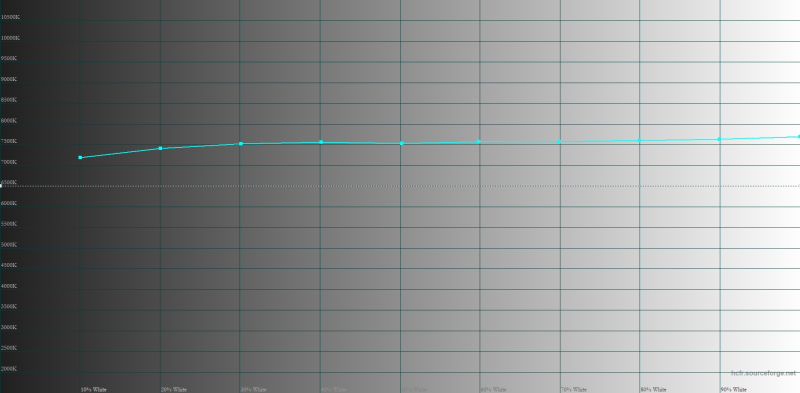
TECNO CAMON 30s Pro, color temperature in Vivid Colors mode. Blue line – TECNO CAMON 30s Pro performance, dotted line – reference temperature
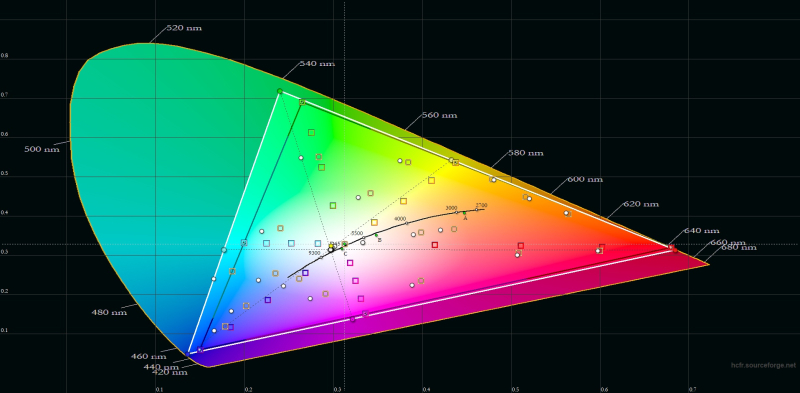
TECNO CAMON 30s Pro, color gamut in Vivid Colors mode. Gray triangle – DCI-P3 coverage, white triangle – TECNO CAMON 30s Pro coverage
In bright mode, the color space expands further (but does not move too far away from DCI-P3, of course), the picture becomes brighter; gamma and temperature almost do not change, the average deviation DeltaE on the Color Checker scale is already 3.62. Essentially, the display works the same with both presets.
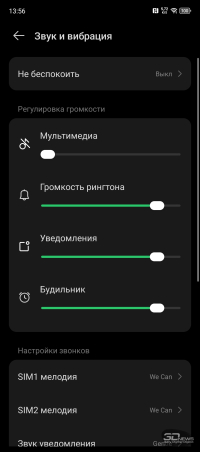
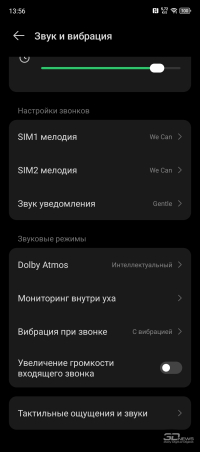
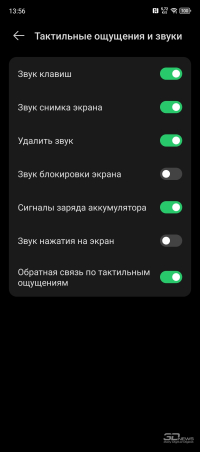
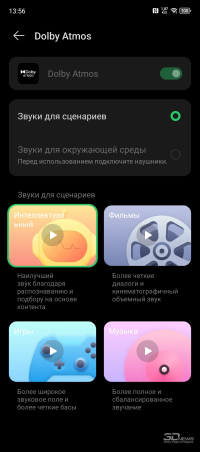
The smartphone is equipped with stereo speakers – along with a separate one located on the bottom edge, there is a conversation speaker, but the sound, thanks to special slots, is output to the top edge, so the positioning will be better. There is no mini-jack; Bluetooth version 5.3 is used for wireless audio transmission – with support for the LDAC profile, but without aptX.
⇡#«Iron and performance
TECNO CAMON 30s Pro uses the MediaTek Helio G100 hardware platform – this is an evolution of the already legendary Helio G99, but the differences do not seem so significant.
The architecture of the main part of the platform is the same: two ARM Cortex-A76 cores with a clock frequency of 2.2 GHz and six ARM Cortex-A55 cores with a frequency of 2 GHz, a 6 nm process technology, and an ARM Mali-G57 MC2 graphics subsystem, whose clock frequency has not increased. The instruction set is the same – ARMv8.2-A. In fact, the only real innovation of the “fresh” platform (introduced in August 2024) was support for cameras with a resolution of up to 200 megapixels – which is not needed in CAMON 30s Pro.
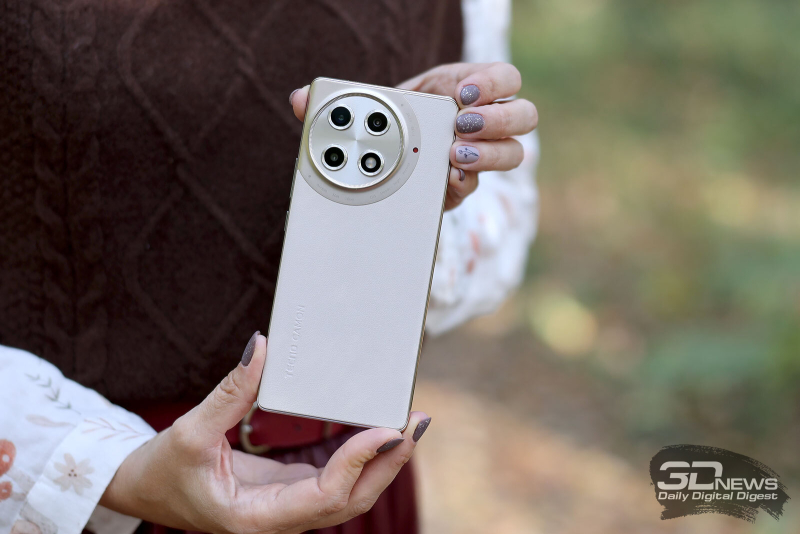
In terms of performance, this is still the same base at the level of the Helio G99 – in some benchmarks the G100 seems to be a little better, in others a little worse. In fact, everything is within the statistical error, a normal average level for a smartphone in its price category. There was no support for any new protocols (like Vulkan 1.3) or faster memory (the latest UFS 2.2). That is, yes, the G99 is still relevant for a smartphone priced at 25 thousand rubles this year, but you shouldn’t count on the fact that there is actually a new platform that will provide a foundation for several years to come.
The smartphone has no problems with cooling; overclocking does not lead to overheating. Resource tests, as in the case of Helio G99, do not record a drop in frequency. The gadget heats up minimally under load – in AnTuTu we see an increase of only five degrees.
Memory: 8 GB LPDDR4X RAM and 256 GB UFS 2.2 storage. There are no other storage options, as well as the option to expand the memory using a MicroSD card. But you can add up to 8 GB of RAM using the same drive.
⇡#Communications and wireless communications
TECNO CAMON 30s Pro only works with 4G networks. Speed – Cat.6 (up to 300 Mbit/s), the modem, as we see, in the Helio G100 has not been updated either. All required ranges are supported. The smartphone has two slots for nano-SIM cards and VoLTE. But no eSIM.
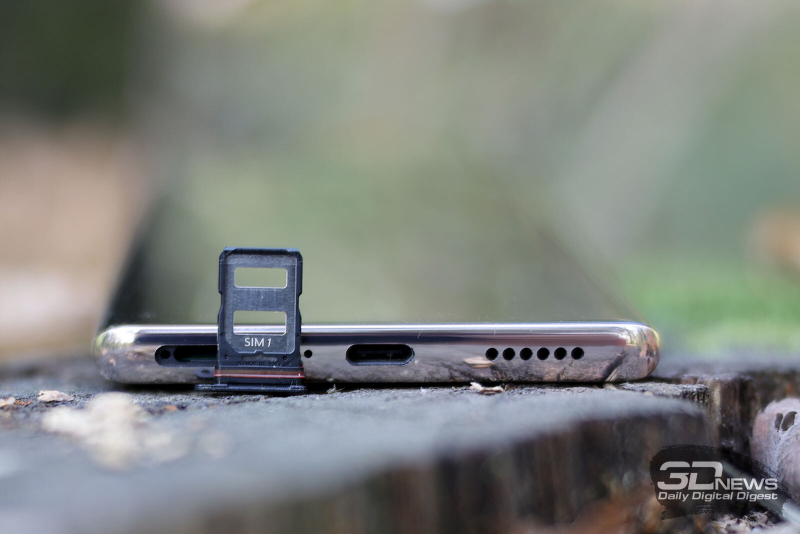
Slot for two nano-SIM cards
Wireless modules: dual-band Wi-Fi (802.11a/b/g/n/ac), Bluetooth 5.3, NFC, navigation module with GPS support (A-GPS), GLONASS, BeiDou, Galileo, infrared.
⇡#Camera
The TECNO CAMON 30s Pro has, let’s say, a basic set of cameras for the brand’s smartphones: a 50-megapixel main one + an auxiliary one, the functions of which are not officially declared. Maybe it helps with background blur in portrait mode, maybe it takes monochrome photos to help with post-processing. But in fact, we have seen similar pairs on a variety of models for several years. The only difference can be in the main chamber.
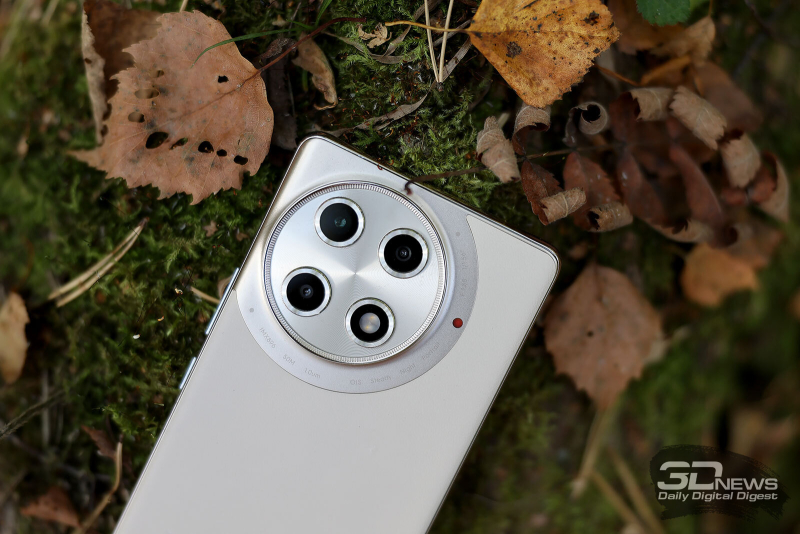




On the left are pictures with a resolution of 12.5 megapixels, on the right – 50 megapixels
The Sony IMX896 sensor is built according to the Quad Bayer scheme, that is, the photosensitive sensors are assembled in groups of four, and by default the smartphone produces images in a resolution of 12.5 megapixels (4,064 × 3,048), but with the ability to switch to shooting mode using each subpixel. And with a resolution of 100 megapixels at once! Upscaling is used, in addition, both with a standard focal length and with a 2x zoom – software, as you understand. As a result, we can get pictures in a resolution of 11,520 × 8,640. And no, this resolution does not benefit the photographs – even at a quick glance, they do not seem more detailed than standard 12 megapixel photographs. Moreover, such photos take up much more space in the smartphone’s memory.





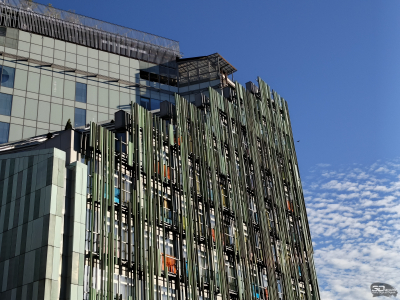








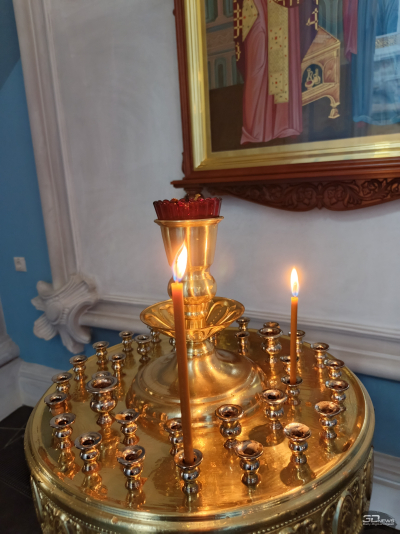

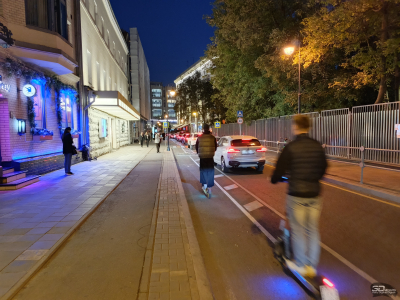
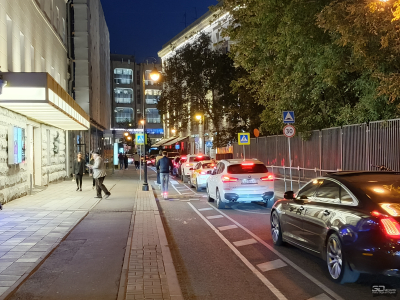

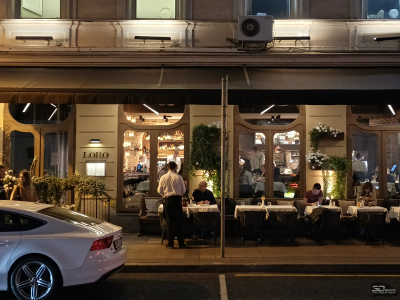




On the left is a photo with a standard focal length, on the right is with a 2x hybrid zoom
At the same time, the TECNO CAMON 30s Pro shoots well with basic resolution. Correct color rendition, almost no errors with white balance, high detail. There is a certain feeling of “oversharing” – the detail is still increased by software, and this is easily noticeable when viewed on a large screen. The dynamic range is very good – shadows in contrasting scenes are drawn out well, and there is no noticeable chromatic noise. There are also no overexposures: pay attention to the above photographs in the cathedral – the windows did not turn into white spots in the bright sunlight outside. The smartphone also takes very good pictures at night – a city at night in bright street lighting is no problem at all, but in scenes where there is a lot of night sky in the frame, for example, noise is already noticeable. In terms of sharpness, everything is fine – thanks to the optical stabilizer.
The 2x hybrid zoom (due to cropping from a 50-megapixel image) is implemented well. It is very interesting that the image does not look more compressed than one shot with a standard focal length, although it would seem that the “oversharpening” was already there. The quality sags only when shooting at night, where the lack of resolution is already evident – and from time to time micro-blurring is possible, especially with dynamic scenes. In general, there are minimal questions regarding the shooting quality of the TECNO CAMON 30s Pro. All questions are specifically related to the set of cameras, where there is neither an extended viewing angle nor an optical zoom.
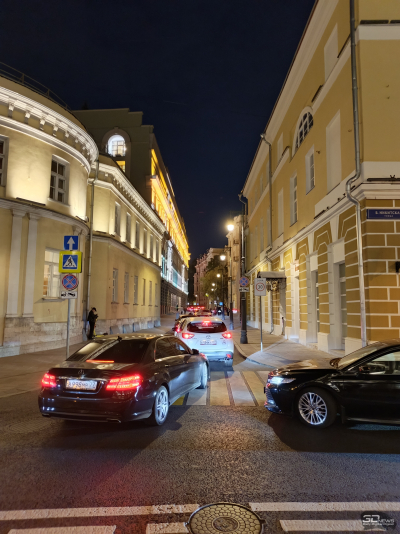
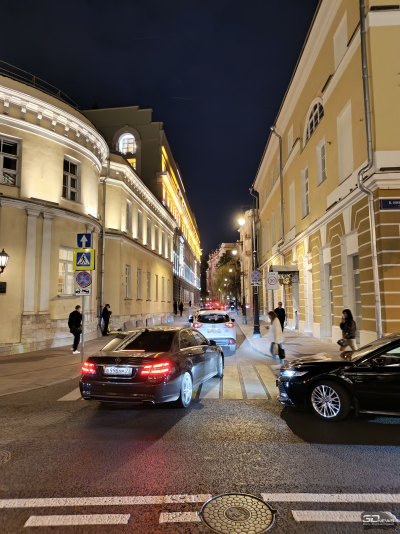






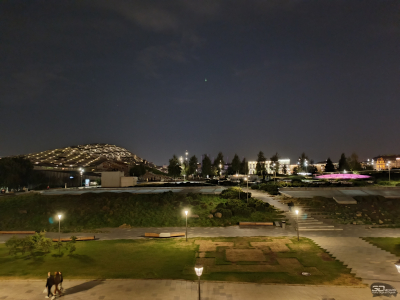
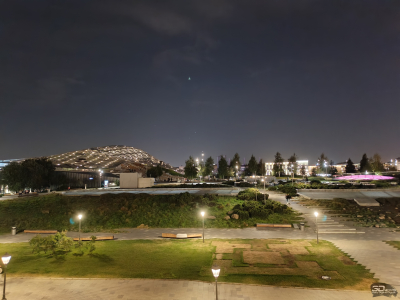


On the left are pictures in standard mode, on the right are in night mode
There is a night mode in which the smartphone takes several frames with different exposures, then combining them into one and finalizing the result using neural networks. The picture becomes brighter, noise is smoothed out, details are added, the only side effects being more pronounced glare from light sources. Otherwise, I recommend using night mode, especially with zoom.
There are specialized night filters – they work a little roughly, but overall they look impressive.




As usual on the most inexpensive TECNO smartphones, portrait mode cannot combine retouching and artificial background blur. Special mention must be made about retouching – it can be adjusted very flexibly (separately for the face and body), there is even the ability to “draw” makeup. Blurring works quite well – but only in simple situations where the model and background are visually separated from each other. If the subject of the photo has something in his hands, there are objects in the photo that are close to the model, they can unexpectedly also be blurred. The nice thing is that there are three available focal lengths (equivalent to 23, 35 and 50 mm).



The “profiles” characteristic of other smartphones in the TECNO CAMON series are in place – three shooting options to choose from, in which the gadget not only (and not so much) tones the image, but works with saturation, shadows and other fine settings. There are three of them: “Standard” (default), “Backlight” and “CAMON”. In the “Backlight” mode the picture is more saturated than in the basic one, in the “CAMON” mode it is colder and pale.
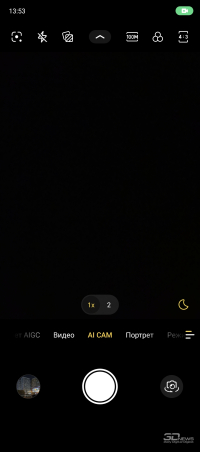
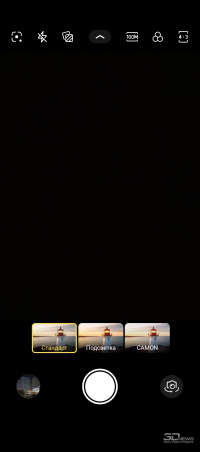
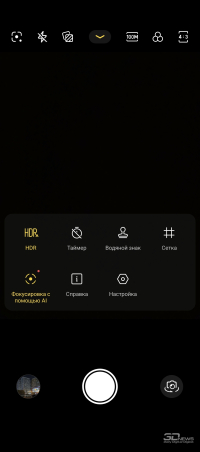
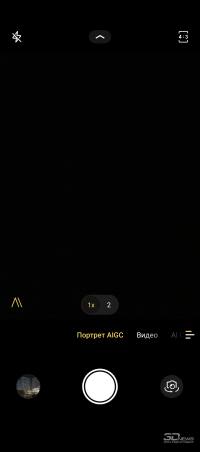
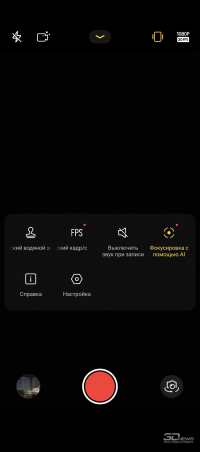
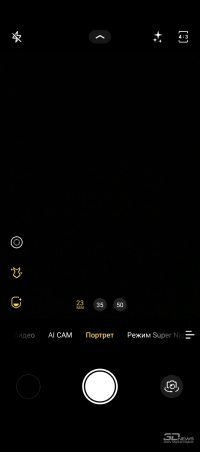
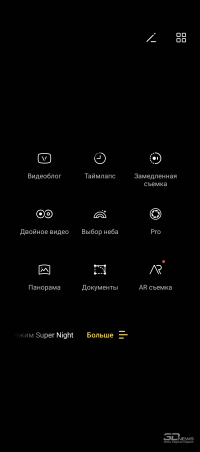
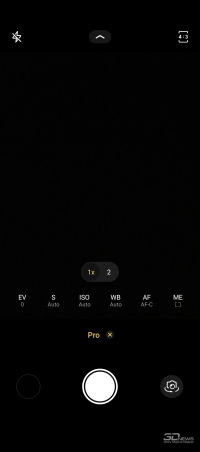
TECNO CAMON 30s Pro Camera App Interface
The camera application is familiar – a horizontal carousel of modes, additional shooting options are called up from a submenu pulled out from the bottom edge. There is a manual shooting mode, and gluing together clips (“Film” mode), and shooting with augmented reality masks, and the ability to shoot with the rear and front cameras simultaneously (“Dual Video”), and a proprietary mode with replacing the sky in the photo (“Select sky”). There is also a mode with manual settings (Pro).
Video recording is available at a maximum resolution of 2K (2560 × 1440) at up to 30 fps or Full HD at up to 60 fps. Digital stabilization works at any resolution, there is also enhanced stabilization (noticeably more effective), it is available when shooting with Full HD resolution (30 frames per second); Basic stabilization works well, but nothing more. Although, probably, not only the digital method is used, but also the optical one. There are additional modes: the smartphone allows you to shoot video with artificial bokeh and portrait video with retouching – as with photos, these are two separate modes, and both of them are only available at 720p resolution. It is possible to shoot with various effects and filters. The picture quality is average – the image is slightly pinched and jerks when the cameraman moves.





Offline work
TECNO CAMON 30s Pro received a battery with a capacity of 19 Wh (5000 mAh, 3.8 V) – everything is standard here. And in terms of autonomy, it’s also expected – a day with a heavy load, a day and a half with very measured use of the smartphone. But under serious pressure (if you play on a smartphone without interruption or shoot a lot of videos), it “floats” a little.
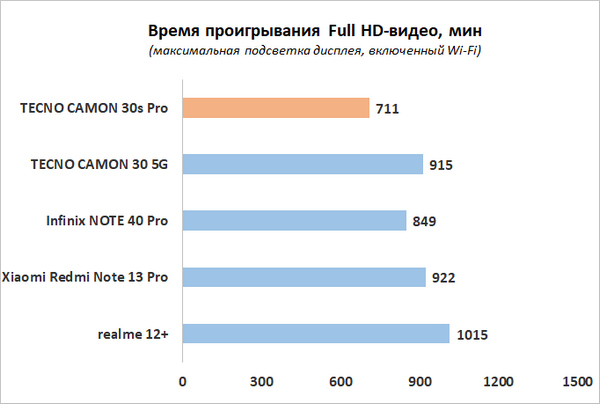
In the test with Full HD video playback at maximum brightness, with Wi-Fi turned on, TECNO CAMON 30s Pro lasted almost 12 hours – for a modern smartphone with an OLED screen, this figure cannot be called outstanding.

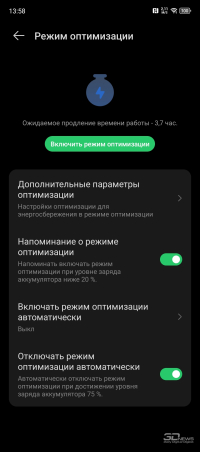




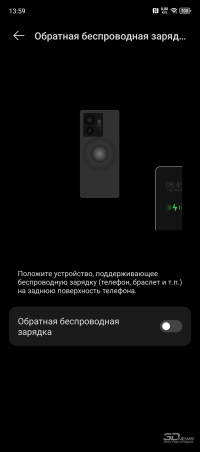
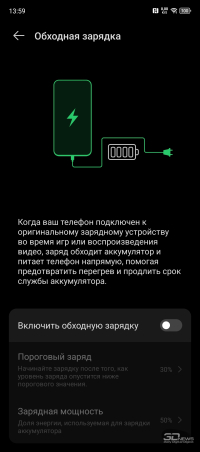
TECNO CAMON 30s Pro comes with a 45W charger, which takes about an hour and fifteen minutes to fully charge. Worse than the same TECNO CAMON 30 5G, but not bad against the general background. What’s even better is that it supports wireless charging up to 20W. Moreover, the kit already includes a cradle, albeit with a power of only 15 W. But we are talking about a mid-price smartphone, let me remind you, so this “only” is some coquetry. There is reverse wireless charging for accessories, and bypass charging (the current goes not to the battery, but directly to the motherboard, which allows the device to heat up less – for example, during long gaming sessions), and various charging modes (faster, but merciless to the battery , slower, but carefully).
⇡#Conclusion
TECNO CAMON 30s Pro is somewhat puzzling with its positioning. How does this “s” relate to the rest of the “thirties” – and if this is a junior version, then why is it more expensive than TECNO CAMON 30, and even TECNO CAMON 30 5G? Yes, everything is somewhat confusing, but this is normal for Chinese brands.
But if we move away from taxonomic research, then TECNO CAMON 30s Pro is definitely good as a mid-class smartphone. Yes, the hardware platform is not surprising (it’s still the same Helio G99 with a new sauce), but it’s not particularly outdated compared to the general background. Yes, there are not enough additional focal lengths on the camera, but not all competitors have them. At the same time, the camera that we have takes really good pictures. There is wireless charging (both forward and reverse). The display is bright and good. Well, one more thing – this is perhaps the most beautiful smartphone in its class.
Advantages:
- Wonderful design – unusual and with a retro touch;
- The case is light and thin, with IP54 splash protection;
- Large and bright AMOLED display with a refresh rate of 120 Hz (which is supported in games);
- Enough memory;
- Fast wired charging + support for wireless charging;
- Wireless charger included;
- Good quality of shooting on the rear camera;
- High-quality front camera – with LED flash;
- Stereo speakers.
Disadvantages:
- Portrait mode and retouch mode are separated;
- There is no wide angle or optical zoom;
- No mini-jack;
- No memory card slot;
- The hardware platform is new only in name (although the performance is sufficient);
- A lot of pre-installed software in the shell.